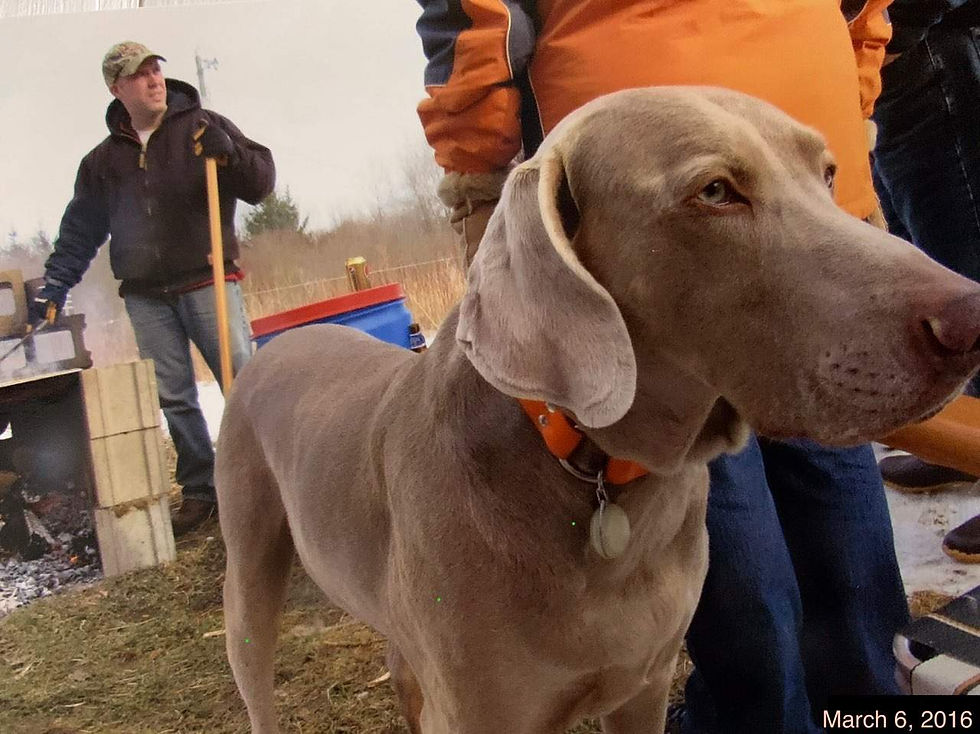
As I wash, pack, and take care of the syrup equipment, I’m reminded of when I began this adventure. What started out as a few buckets and an open fire continues to grow each year. Making syrup has given my sons a chance to learn the value of hard work while having fun. It has brought new friends into our lives and helped strengthen bonds with old ones. Every season I learn something new, and every season I try to pass on something to others in the woods. It wasn’t always this “glamorous” though.
The first time I made syrup, it was done very primitively. With a few cement blocks, a couple buffet pans, and a fire that seemed to produce more smoke than fire, the struggle was real. That day my parents came to visit and when my Dad walked around the pole barn and seen my setup boiling for the first time he yelled, “What are you doing, making meth?!” I assured him I was not, but as sad as that set up looked, I can appreciate the humor in his question.

After boiling for a couple of hours I pulled off my fresh syrup and brought it inside to bottle. Between the two pans, I had a couple of gallons in as many hours. This was easy! Once it cooled, I tasted it to make sure it was good. It was not. That day I learned what a hydrometer was. I also ordered a book, “Back Yard Sugaring,” by Rink Mann. But before that, I brought my sap back out to the fire and began boiling again. I had a lot more to go before it would be ready.
As night began to creep in, I remembered hoping that I was close. I had been boiling the entire day and I had no more sap to add. I figured I’d better run up to the house and grab a flashlight. Something new sugar makers might not know is that sap can boil over extremely fast. If it does, it will burn and ruin a perfectly good pan as well as ruin the syrup. It’s very important that you watch your boil so this doesn’t happen.
When I got back with my flashlight, I was met with the smell of burnt syrup and a ruined pan. Half of my syrup was gone and one of my two pans was ruined from boiling over. Seeing how low my other pan was, I pulled it off and brought it up to the house to filter and bottle what syrup was left. When starting out, it’s hard for many sugar makers to justify purchasing an actual canner or filter set up. I was like most new sugar makers. Instead of buying one, I built one out of wood dowels. I used nails to hang the filter on it. It’s important to keep your syrup hot while filtering, otherwise it will go very slowly. A handful of wooden dowels did not keep it warm. It. Took. Forever.
Sometime after midnight, I finally had syrup. After that first taste though, I knew I had something more than just maple syrup. I had Swamp Sugar. I think we ended up with a little more than two pints that were canned in Ball Mason Jars. I was ecstatic. I was the only one still awake, but I was ecstatic. I made sure the fire was out and went to bed. As I did, I remember laying there; already plotting what improvements I could make for the rest of that season and what ones I would make for the next. I knew that night that Swamp Sugar was something that would change my life.
There have been considerable improvements since then. A lot of equipment from Leader Evaporator and a lot of knowledge gained from experience and reading. Grey Dog Maple Farm is a long ways from where it started and we still have a long ways to go. Thank you for going on this journey with us.


Comments